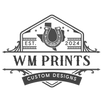In recent years, the landscape of manufacturing and product design has been dramatically transformed by advancements in 3D printing technology. No longer confined to the realms of aerospace and specialized engineering, this innovative technology is making waves across various industries, offering creative solutions that were previously unattainable. From revolutionizing medical practices to redefining custom manufacturing processes, 3D printing is indeed paving the way for the next industrial revolution.
The Evolution of 3D Printing
Initially developed in the early 1980s, 3D printing has come a long way. Also known as additive manufacturing, this process involves creating objects layer by layer using a digital file as a blueprint. While traditional manufacturing methods often involve subtractive processes, where materials are removed to create a product, 3D printing adds material, reducing waste significantly and allowing for high precision.
Key Innovations and Their Impact
One of the most exciting developments in 3D printing is its application in the medical field. Custom prosthetics and implants tailored to patient-specific needs are becoming increasingly feasible. Bioprinting, which involves printing tissue and organ structures, is still in the experimental stages but holds immense potential for the future of transplants and regenerative medicine.
In addition to healthcare, 3D printing is also making strides in the realms of art and design. Artists and designers now have the freedom to create intricate pieces that were previously impossible to fabricate with traditional methods. This has led to a surge in creativity, particularly in the fashion and jewelry industries.
Advanced Tools for Precision
As 3D printing continues to evolve, so too do the tools that accompany it. For enthusiasts and professionals alike, having the right tools can make all the difference in the precision and quality of prints. One such innovation is the Lyman Type Prep Tools Holder, which offers an organized and easy access solution for prepping your tools, ensuring your prints come out as intended.
The Role of 3D Printing in Sustainability
Another significant advantage of 3D printing is its potential role in promoting sustainability. By minimizing waste and using eco-friendly materials, 3D printing can contribute to more sustainable manufacturing practices. The ability to print locally also reduces the need for long-distance shipping, which can further reduce the carbon footprint.
Conclusion
The breakthroughs in 3D printing technology are continuously shaping the future across diverse fields. As innovation flourishes, accessibility increases, and costs reduce, it is clear that the versatility and potential of 3D printing will continue to be realized in profound ways. Whether you're a professional delving into specialized fields or an enthusiast exploring new creative avenues, staying abreast of these developments can provide exciting opportunities.
For more insights and the latest products in 3D printing technology, visit WM Prints.





